A Tokyo culinary oasis: Dining at Sakura Restaurant
Located in Roppongi, within the historic International House of Japan, this restaurant is part of a long tradition of cultural exchange and intellectual dialogue
Tokyo, a city of over 37 million people, is known for its vibrant energy, where the fast pace of life rarely takes a break. But amid this urban sprawl, there are tranquil spaces where time seems to move at a much glacial pace—places like the International House of Japan’s (IHJ) Sakura Restaurant, a not-so-hidden gem nestled within a traditional Japanese garden. It’s here that I recently enjoyed a meal that not only celebrated fine dining but also offered a moment of calm reflection.
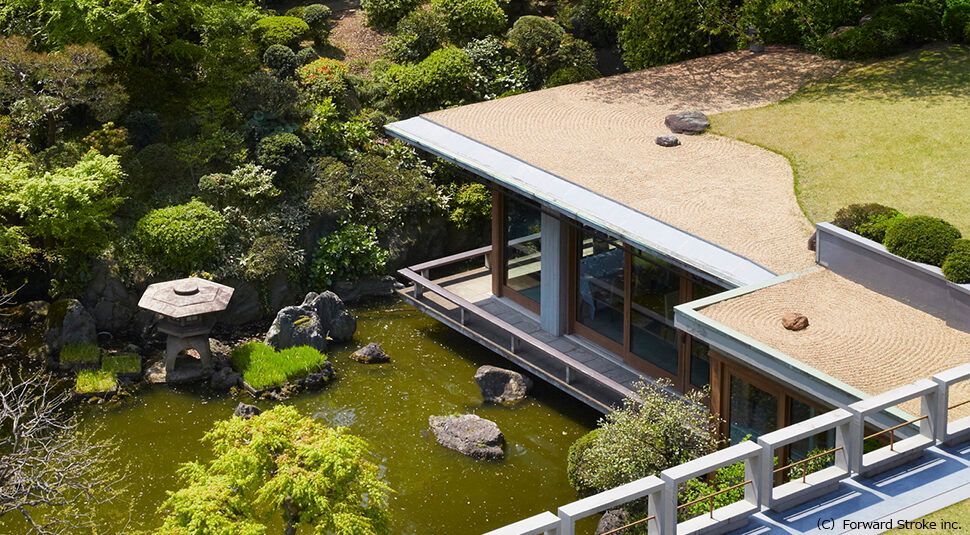
On this particular afternoon, I found myself seated with a diplomat I greatly admired. We were there to mark a well-earned milestone in her diplomatic career. Our table was perfectly positioned, our chairs gently angled, allowing us to enjoy a stunning view of the meticulously manicured Japanese garden that envelops the restaurant. “People come here for the view, but the food is also excellent,” she said, her voice steady with admiration for the place. And as we delved into our meal, I quickly realized she was right—the food at Sakura is just as memorable as its surroundings.
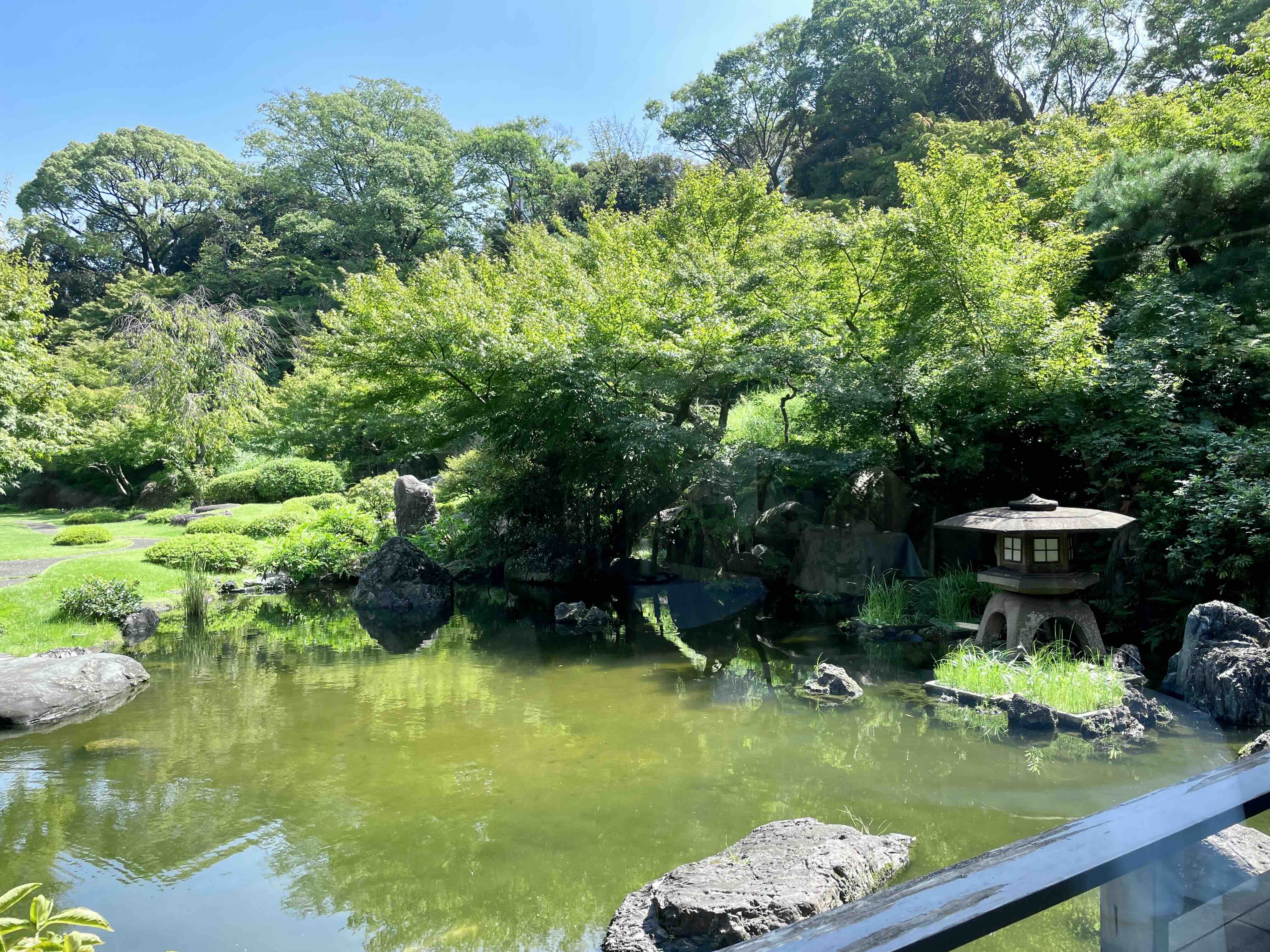
The Chef’s Lunch offers four courses and the freedom from burdening oneself with having to choose what goes into the set or opting for something à la carte. It’s hard to go wrong with what the Chef recommends from his or her own kitchen.
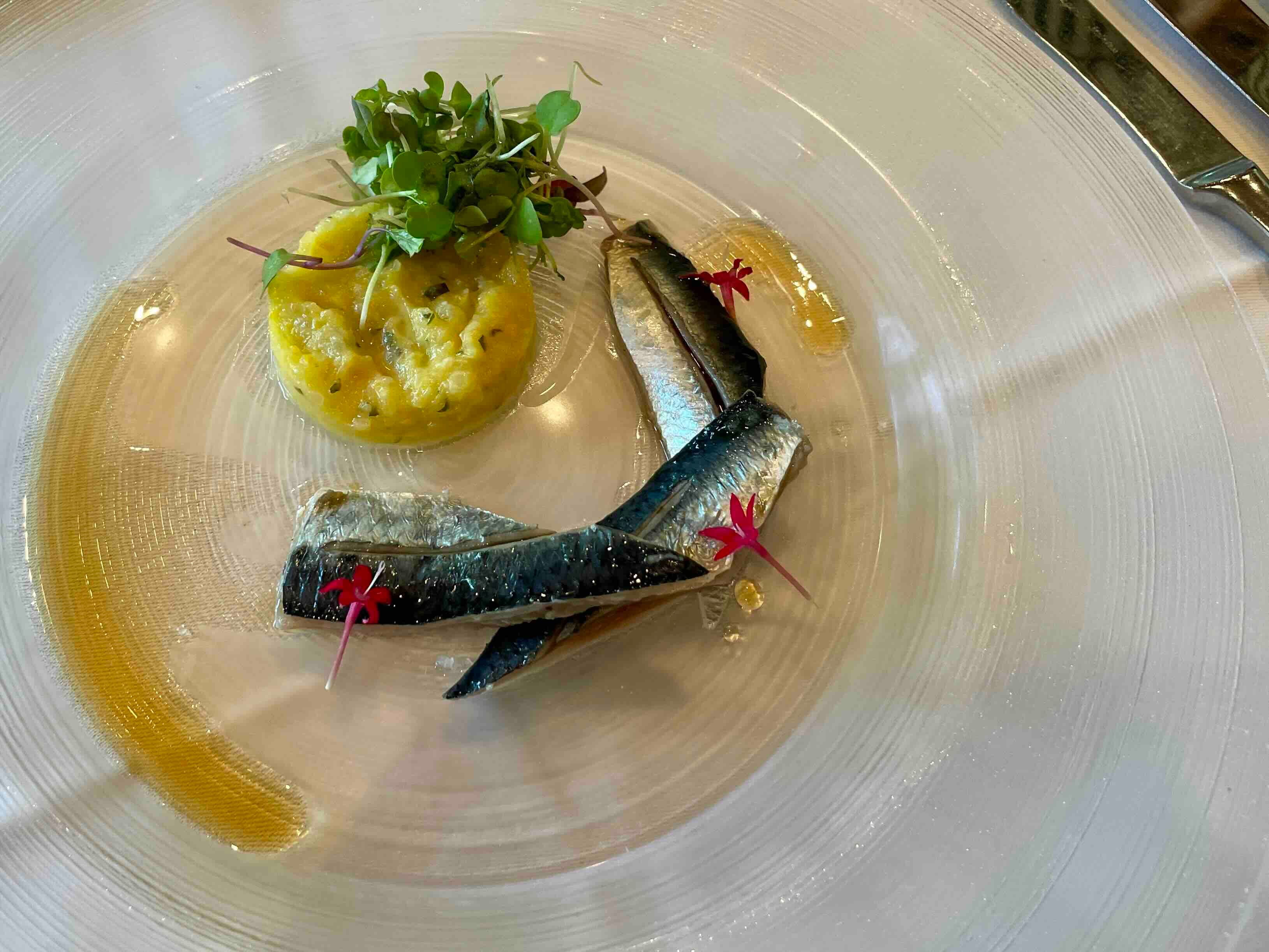
Our meal began with a refreshing Anchovy Salad, accompanied by zucchini fondant and a light drizzle of white balsamic sauce. The combination of salty anchovy and the subtle sweetness of the zucchini was a lovely contrast, setting the tone for what would be a meal that focuses on balance and elegance. Each bite echoed the understated beauty of the restaurant’s surroundings—simple but layered, with an air of refinement that never feels forced.
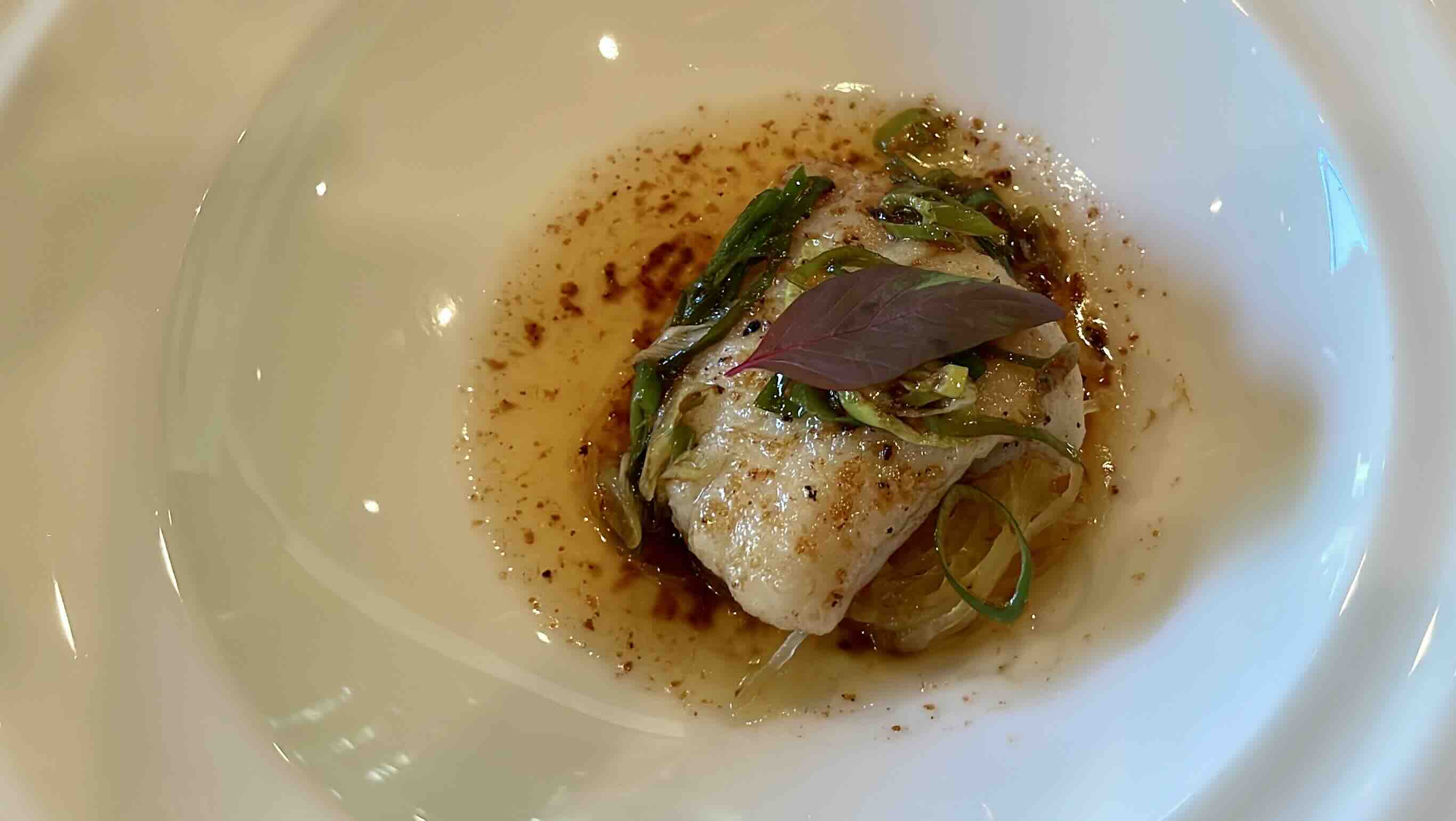
Next came the Sole Meuniere, a dish that was both delicate and comforting. The fish, paired with Kujo green onions and beurre noisette, had a tender, melt-in-your-mouth quality. The marinated spaghetti squash added a touch of crisp and brightness, while the onions provided a slight sharpness that cut through the already-present richness. It was a quiet masterpiece—unpretentious yet executed with precision.
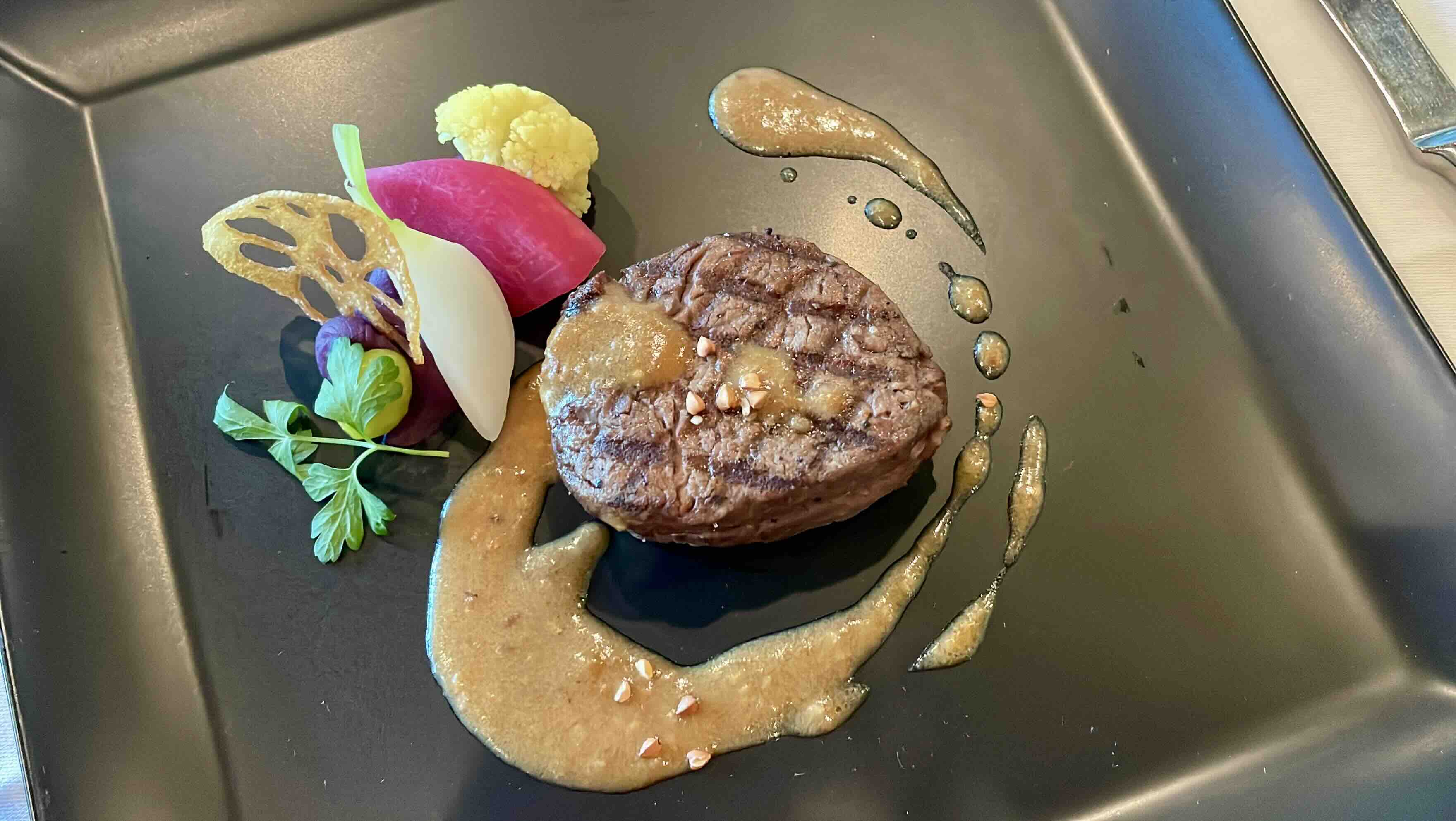
For the main course, we were served a grilled filet of beef with a white sesame Japanese sauce and a roasted buckwheat garnish. The beef was perfectly cooked, tender and rich, with the sesame sauce adding an earthy depth that balanced the flavors. Steamed seasonal vegetables brightened the plate with their vibrant colors and fresh crunch. The playful texture of the roasted buckwheat, creatively formed into a floral crisp, brought a delightful contrast, highlighting the chef’s attention to detail and creativity.
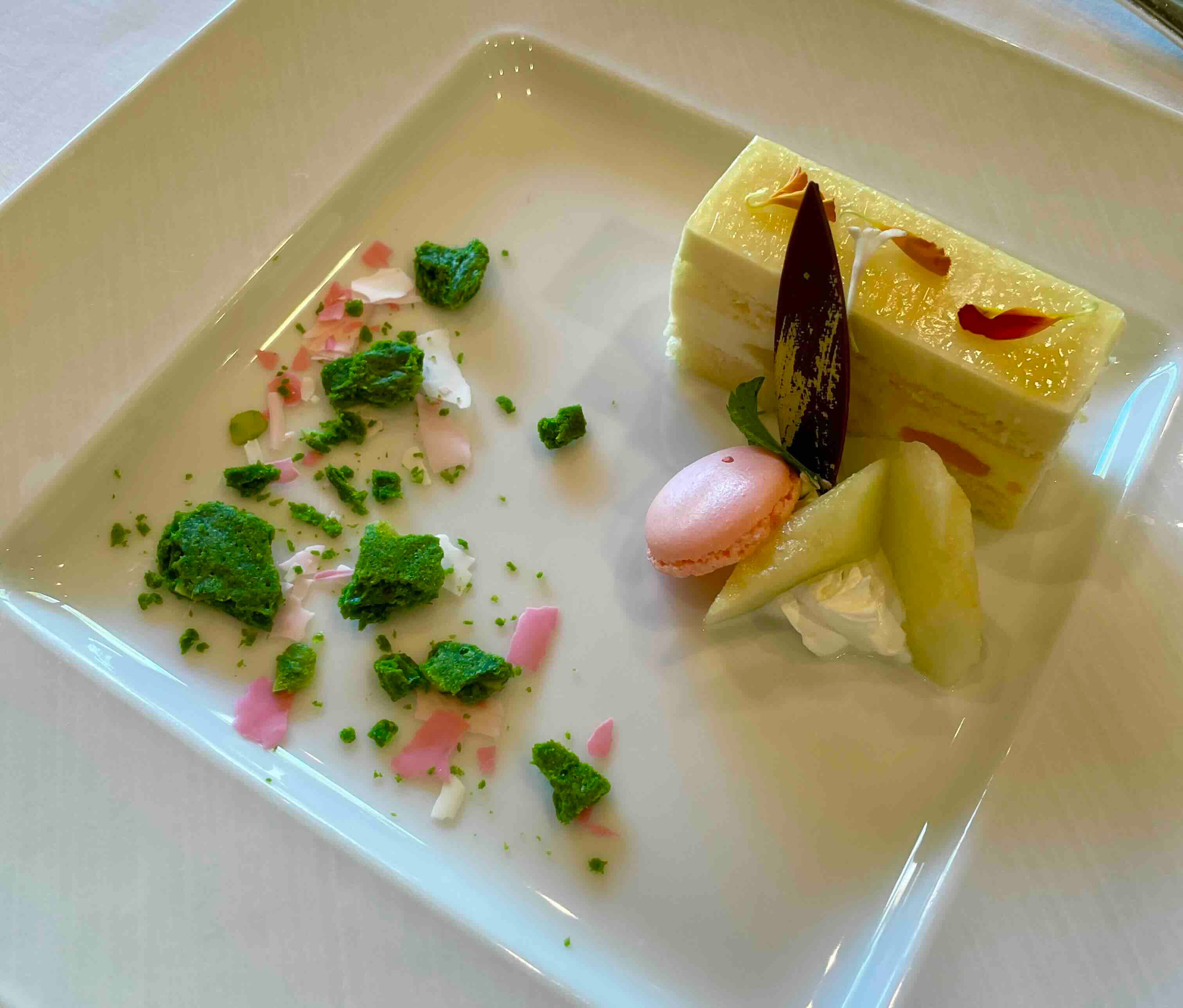
The meal ended with a Passion Fruit Mousse served alongside a Spinach Crumble and a macaron. The mousse was bright and mildly tangy, a refreshing finale after the richness of the previous courses. The spinach crumble, while unconventional, provided a slight bitterness that balanced the sweetness of the dessert. The macaron, delicate and sweet, was the perfect bite to close a meal that had been thoughtful from start to finish.
While the food at Sakura is undeniably impressive, the restaurant itself holds deeper significance. Located in Roppongi, within the historic International House of Japan, this restaurant is part of a long tradition of cultural exchange and intellectual dialogue. The IHJ was established in 1952 with a mission to promote cultural and intellectual cooperation between Japan and the world. Built on the former estate of Koyata Iwasaki of the Mitsubishi family, the property is a piece of living history, complete with a traditional Japanese garden that dates back centuries.
Designed by prominent architects Maekawa Kunio, Sakakura Junzo, and Yoshimura Junzo, the building is celebrated for its elegant yet functional design, blending modern architectural principles with traditional Japanese aesthetics. The garden, which changes with the seasons, becomes a sea of cherry blossoms in the spring—a sight that regular patrons eagerly anticipate. It welcomes shades of crimson and burnt orange during autumn, evergreen trees that sometimes enjoy a dusting of white snow in winter, and lush greenery during summers.
As we sat in the restaurant, thoroughly enjoying the meal and exchanging stories, I got to reflect on my companion’s quiet strength that’s been instrumental in navigating her career. As the afternoon stretched on, I realized that places like the IHJ’s Sakura Restaurant offer more than just fine dining—they provide a space for reflection, for important conversations, and for moments that deserve to be savored, much like the meal we enjoyed that day.
For those traveling to Tokyo and seeking not just a meal but an experience that’s historical, cultural, and highlighted by culinary expertise, Sakura offers a perfect escape. And while the view may be what initially draws many visitors in, it’s the food that keeps them coming back.